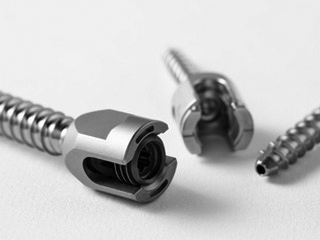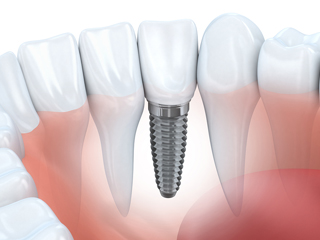Bone plates and screws are medical devices that are commonly used in orthopedic surgeries to fix and stabilize broken bones. These devices help in the healing process by immobilizing the fractured bone segments, enabling them to fuse back together.
Bone plates and screws are used in a wide range of orthopedic procedures, including spine surgeries, hip replacements, and fracture repairs. They come in various shapes and sizes, and are made from a variety of materials.
Types of Bone Plates and Screws
There are several types of bone plates and screws, each designed for a specific type of bone fracture or injury. Some common types of bone plates include:
Compression plates: These plates are used to stabilize fractures that are under compression. They help to reduce the distance between the two bone fragments and compress them together.
Locking plates: These plates have a special screw design that locks the screws into place. They are used in cases where there is poor bone quality or where there is a need for more stability.
Reconstruction plates: These plates are used in situations where there is a need to reconstruct a large bone defect. They can be shaped to fit the specific contours of the bone, providing more stability and support.
Buttress plates: These plates are used in cases where there is a need to support a bone that is under tension. They help to redistribute the forces on the bone and prevent it from breaking.
T-plates: These plates are used in cases where there is a need to stabilize a bone fracture at a right angle. They are often used in fractures of the lower leg and wrist.
Screws used in bone plates also come in various types, including:
Cortical screws: These screws are used in the outer layer of bone, where the bone is denser and harder.
Cancellous screws: These screws are used in the inner layer of bone, where the bone is softer and less dense.
Locking screws: These screws have a unique design that allows them to lock into the plate, providing more stability.
Materials Used to Make Bone Plates and Screws
Bone plates and screws are made from a variety of materials, including stainless steel, titanium, and bioabsorbable materials. Stainless steel is the most common material used for bone plates and screws because it is strong, durable, and relatively inexpensive. However, it is not as biocompatible as other materials and can cause allergic reactions in some patients.
Titanium is a more expensive material than stainless steel, but it is biocompatible and has a lower risk of causing allergic reactions. Titanium bone plates and screws are often used in patients who have a high risk of allergic reactions or who require a longer-term implant.
Bioabsorbable materials are a newer type of material that is designed to be absorbed by the body over time. They are often used in situations where a temporary fix is needed, such as in children who are still growing. These materials are typically made from polymers, such as polylactic acid or polyglycolic acid.
Recent Advances in Bone Plates and Screws
There have been several recent advances in the field of bone plates and screws, including:
3D printing: 3D printing is being used to create custom-made bone plates and screws that are tailored to the specific needs of each patient. This technology allows for a more precise fit and can improve patient outcomes.
Smart implants: Smart implants are being developed that can monitor the healing process and provide real-time feedback to doctors. This technology could help doctors to identify potential problems early on and make adjustments to the treatment plan as needed.
Nanotechnology: Nanotechnology is being used to create bone plates and screws that are stronger and more durable than traditional materials. These materials are also designed to be more biocompatible, reducing the risk of rejection or infection.
Injectable bone grafts: Injectable bone grafts are being developed as an alternative to traditional bone grafts, which require a separate surgery to harvest the bone from the patient's own body. These injectable grafts use synthetic materials that stimulate bone growth, reducing the need for additional surgeries and recovery time.
Top Manufacturers and Companies
There are several top manufacturers and companies that produce bone plates and screws, including:
DePuy Synthes: DePuy Synthes is a leading manufacturer of orthopedic devices, including bone plates and screws. The company offers a wide range of products for various orthopedic procedures, and is known for its high-quality and innovative designs.
Stryker: Stryker is another top manufacturer of orthopedic devices, including bone plates and screws. The company is known for its advanced technologies, such as 3D printing and smart implants, and is committed to improving patient outcomes.
Zimmer Biomet: Zimmer Biomet is a global leader in musculoskeletal healthcare, offering a wide range of products for orthopedic procedures. The company's bone plates and screws are designed to provide optimal stability and support for fracture repairs and other orthopedic surgeries.
Smith & Nephew: Smith & Nephew is a leading provider of medical devices for orthopedic, sports medicine, and wound care. The company's bone plates and screws are known for their strength and durability, and are designed to support the body's natural healing processes.
Bone plates and screws are essential tools in the field of orthopedics, helping to stabilize and support broken bones during the healing process. These devices come in various shapes and sizes, and are made from a variety of materials, including stainless steel, titanium, and bioabsorbable materials. Recent advances in the field include 3D printing, smart implants, and nanotechnology, which are improving the precision and effectiveness of these devices. Top manufacturers and companies, such as DePuy Synthes, Stryker, Zimmer Biomet, and Smith & Nephew, are dedicated to improving patient outcomes and advancing the field of orthopedics through innovative technologies and designs.
Find Manufacturer by Subcatagories
Craniomaxillofacial (CMF) Implants
Foot & Ankle Implants
Hip Implants
Knee Implants
Shoulder Implants
Internal Fixation: Rods and Nails
Internal Fixation: Wires and Pins
Intramedullary Screws
External Fixators
Trauma & Extremities Implants
You May Also Like
What is a Spinal Implant? Types, Usage and Options
What are trauma implants?
What is Hip Prosthesis? Types of Hip Prosthesis
What are the types of orthopedic implants?














